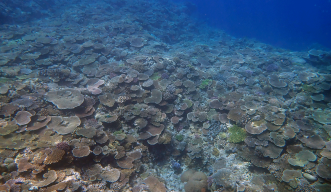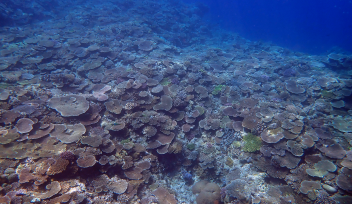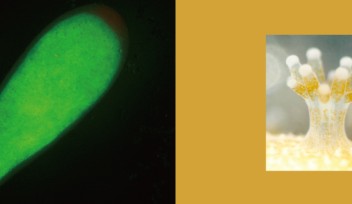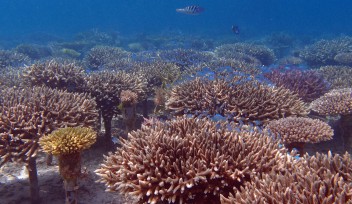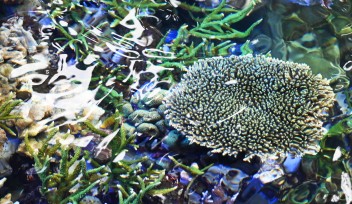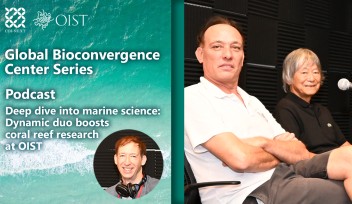Powerful new tool makes coral reef monitoring faster, easier, cheaper

Highlights
- To reverse the global decline of coral reefs, a greater understanding of coral diversity is needed.
- Now, researchers in Japan have developed a tool—a short DNA sequence, called a primer—that can determine the diversity of hard corals on a reef with just a sample of seawater taken from nearby.
- The method used eDNA—the DNA of an organism found in its surrounding environment—that was extracted from seawater samples taken from above three different reefs in Okinawa.
- Analyses of the eDNA using the primer identified 26 genera of coral and found that each reef was made up of its own unique coral composition.
- This new tool paves the way for more accurate and accessible coral reef monitoring—a step forward for coral reef conservation and restoration throughout the world.
Press release
Researchers from the Okinawa Institute of Science and Technology Graduate University (OIST), the University of Tokyo, and the Okinawa Prefecture Environment Science Center have developed a tool that can determine the diversity of hard corals on a reef through analyzing the DNA in a sample of seawater. Reported in Frontiers in Marine Science, this powerful new tool paves the way for more accurate and accessible coral reef monitoring—a step forward for coral reef conservation and restoration throughout the world.
“Coral reefs are very important,” explained Dr. Koki Nishitsuji, staff scientist in the Marine Genomics Unit at OIST. “Not only are they incredibly diverse and house around one quarter of all marine life, they also protect coastlines from storms and erosion, and provide food and income to millions of people worldwide. But, due to global warming, corals are dying and the reefs, disappearing. We want to recover the corals around Okinawa and beyond. To do this, we have to understand the diversity of coral. This new tool is a very accurate and easy way to determine such diversity.”
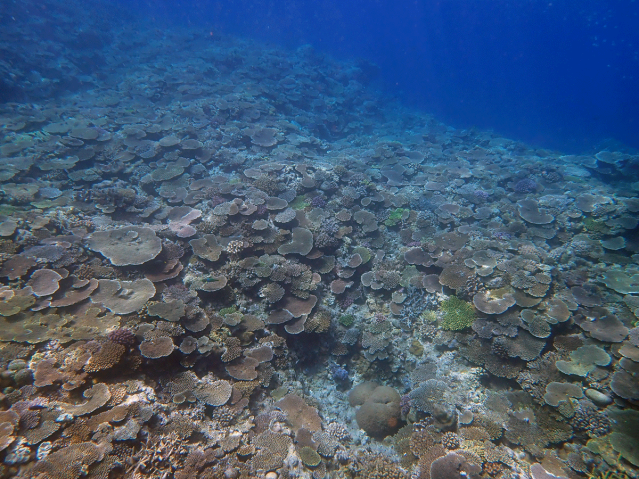
Conventionally, researchers would dive at a site and record the different types of coral they observed and return regularly to record changes. Not only was this time consuming but it also required specialized knowledge—different coral groups can look very similar and thus disguise their underlying phylogenetical diversity. On the other hand, two individuals in the same species can look very different, with varied colors and sizes, further adding to the confusion.
In this study, the researchers removed the need to observe the coral directly by developing a powerful identification tool in the form of a primer—a short DNA sequence. This primer comprised of a sequence that is almost identical in 36 different genera of hard, or scleractinian, coral, allowing for any coral within these genera to be identified with just their DNA.
To test this primer, samples were collected from three separate reef areas in Okinawa, Japan. Although seawater samples might, at first glance, appear void of useful material, they actually contain a soup of genetic information that can reveal what is present in the surrounding ocean through the analyses of environmental DNA (eDNA)— the DNA of an organism found in its local environment. For coral, this entails the DNA encapsulated in the mucus that it expels into the seawater.
The researchers used their primer to extract all the scleractinian coral eDNA from the samples. They then made millions of copies of each piece of extracted DNA, which meant that even the smallest DNA piece was amplified, allowing it to be sequenced and analyzed.
The analysis revealed that different genera of coral could be identified. What’s more, the researchers were able to identify each reef with just the eDNA. Two of these areas were only 730m apart suggesting that eDNA content, and the coral communities, can vary within one kilometer.
When they compared their results with those obtained from the conventional method of visual identification, the researchers found very little difference between the two, suggesting that each was as accurate as the other but the eDNA method was faster and required less specialized knowledge.
“This eDNA method has been used by a few previous studies on coral, but those are less specific to corals or restricted to certain species of coral,” commented Dr. Nishitsuji. “The important part of this study is the primer we developed, which could identify 26 different genera with the samples we used and has the potential to identify more. We will continue to refine our tool to zoom in to species level identification, so we can find out exactly what is present on each reef and what needs to be done to conserve this diversity.”
Article information
- Name: Novel mitochondrial DNA markers for scleractinian corals and generic-level environmental DNA metabarcoding
- Journal: Frontiers in Marine Science
- Authors: Chuya Shinzato, Haruhi Narisoko, Koki Nishitsuji, Tomofumi Nagata, Nori Satoh, Jun Inoue
- DOI: 10.3389/fmars.2021.758207
- Date: November 30, 2021
Specialties
Research Unit
For press enquiries:
Press Inquiry Form











